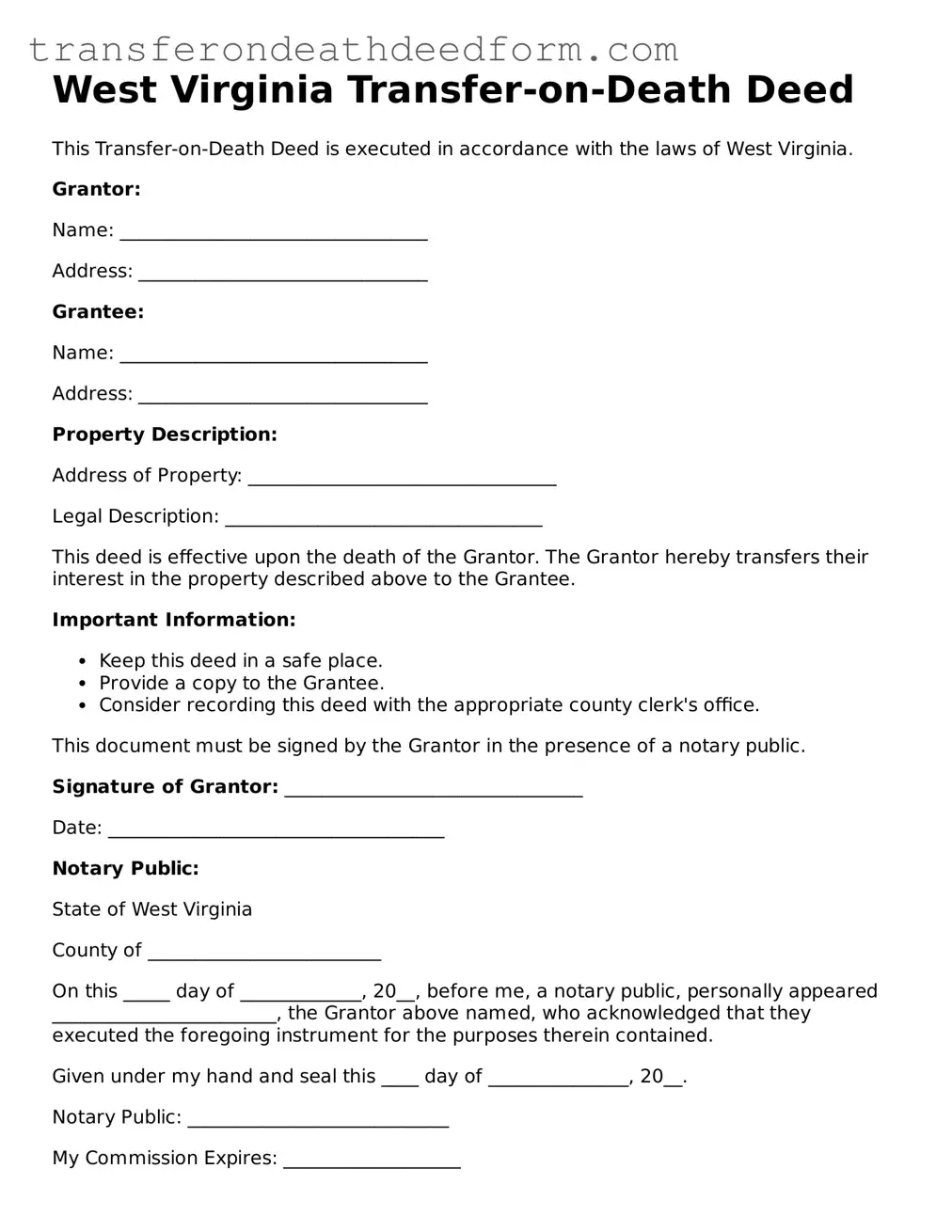West Virginia Transfer-on-Death Deed
This Transfer-on-Death Deed is executed in accordance with the laws of West Virginia.
Grantor:
Name: _________________________________
Address: _______________________________
Grantee:
Name: _________________________________
Address: _______________________________
Property Description:
Address of Property: _________________________________
Legal Description: __________________________________
This deed is effective upon the death of the Grantor. The Grantor hereby transfers their interest in the property described above to the Grantee.
Important Information:
- Keep this deed in a safe place.
- Provide a copy to the Grantee.
- Consider recording this deed with the appropriate county clerk's office.
This document must be signed by the Grantor in the presence of a notary public.
Signature of Grantor: ________________________________
Date: ____________________________________
Notary Public:
State of West Virginia
County of _________________________
On this _____ day of _____________, 20__, before me, a notary public, personally appeared ________________________, the Grantor above named, who acknowledged that they executed the foregoing instrument for the purposes therein contained.
Given under my hand and seal this ____ day of _______________, 20__.
Notary Public: ____________________________
My Commission Expires: ___________________
